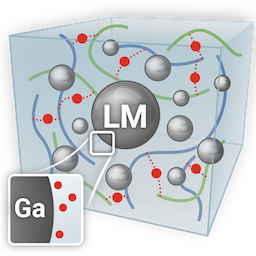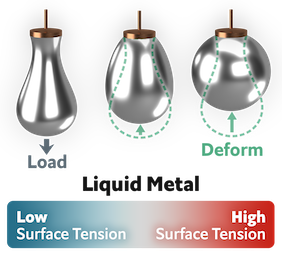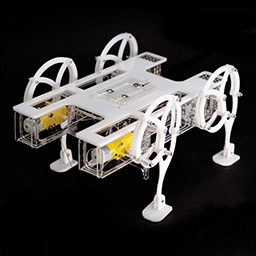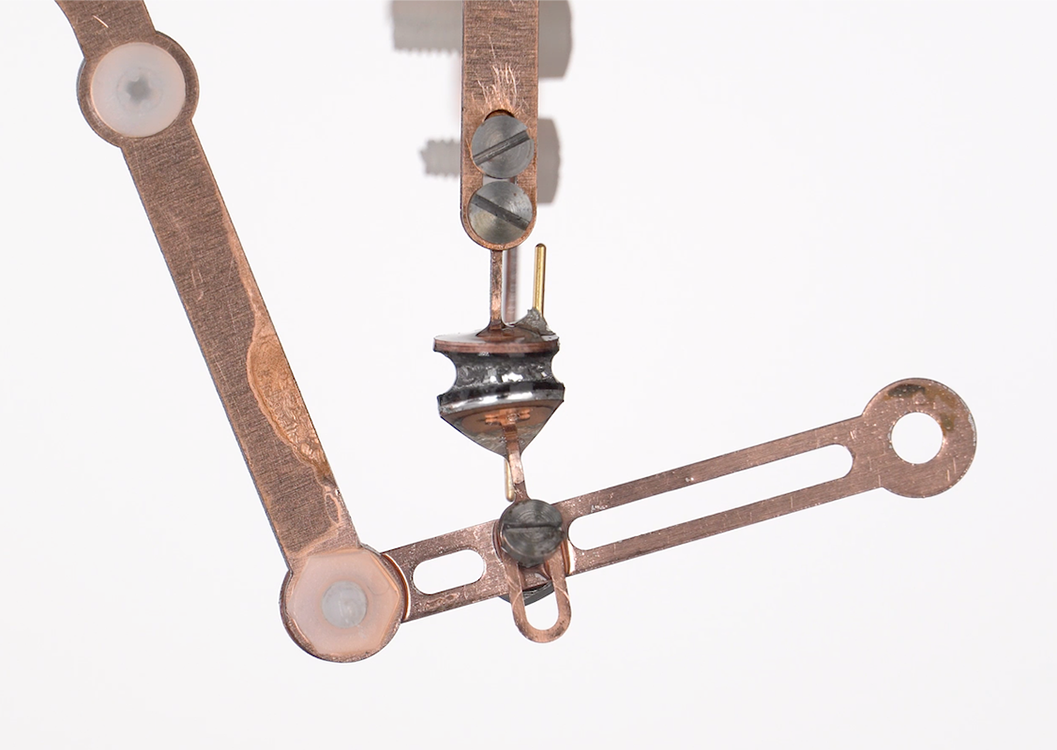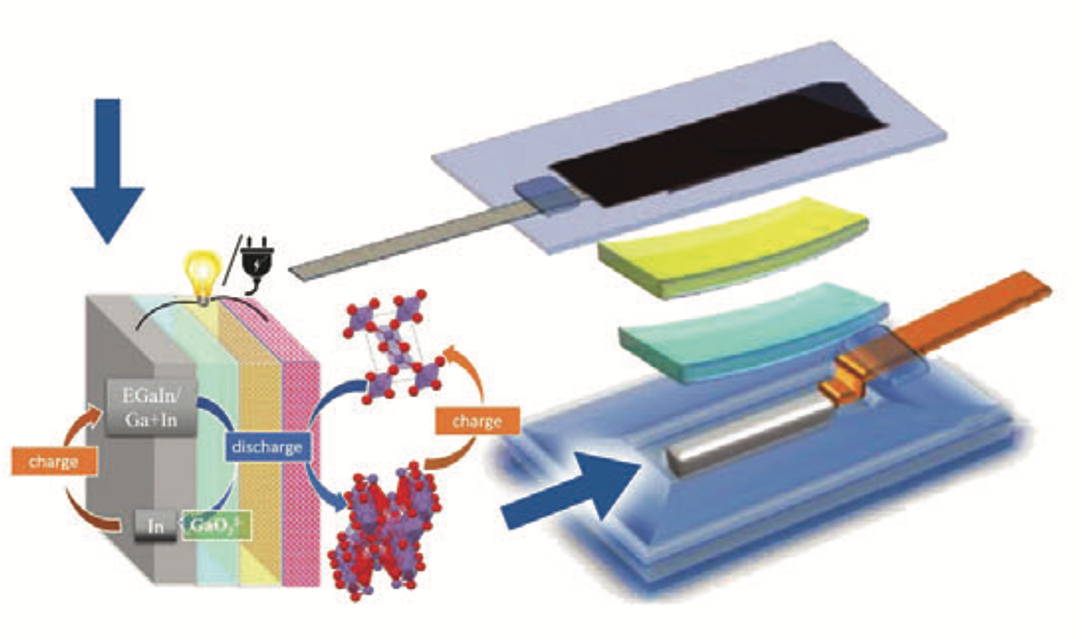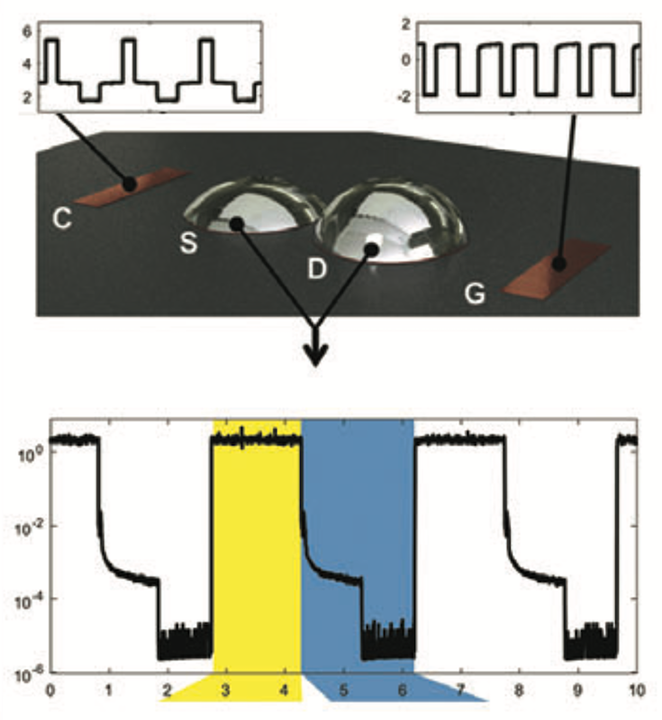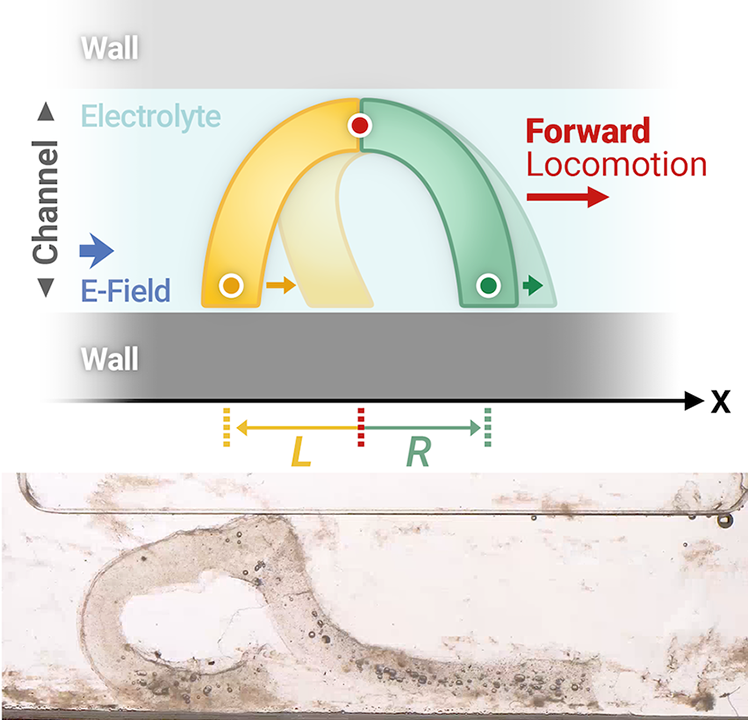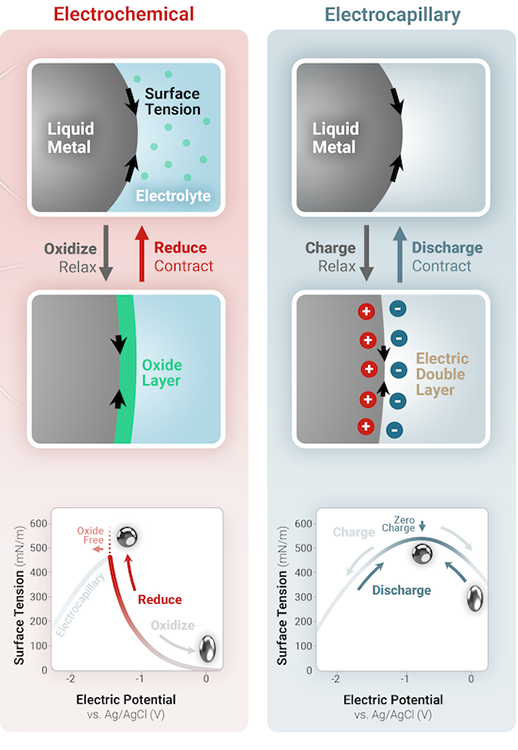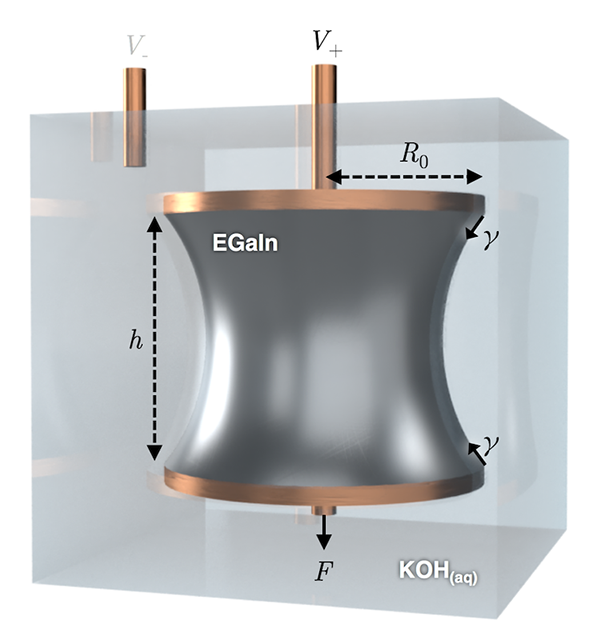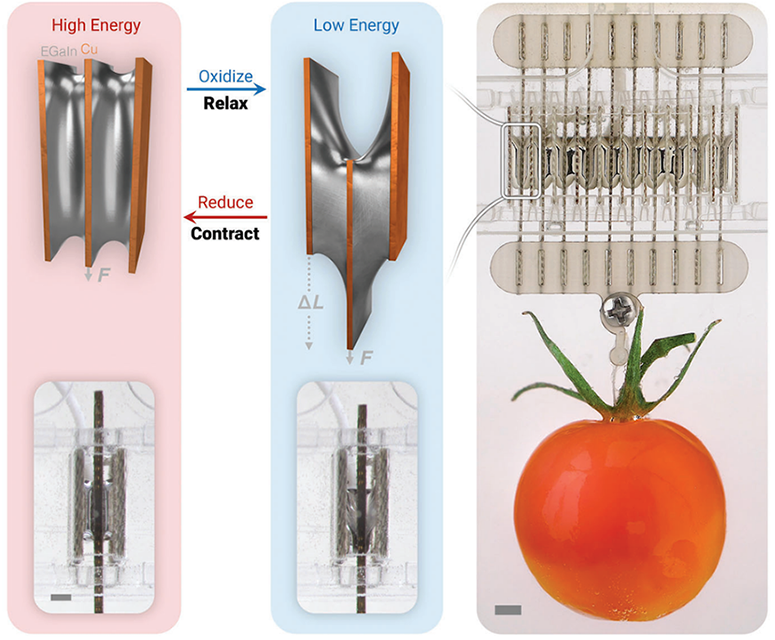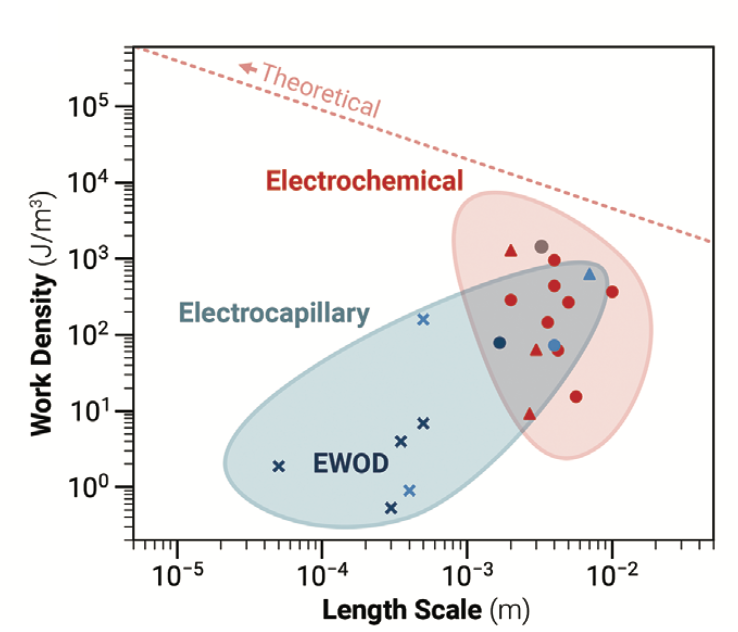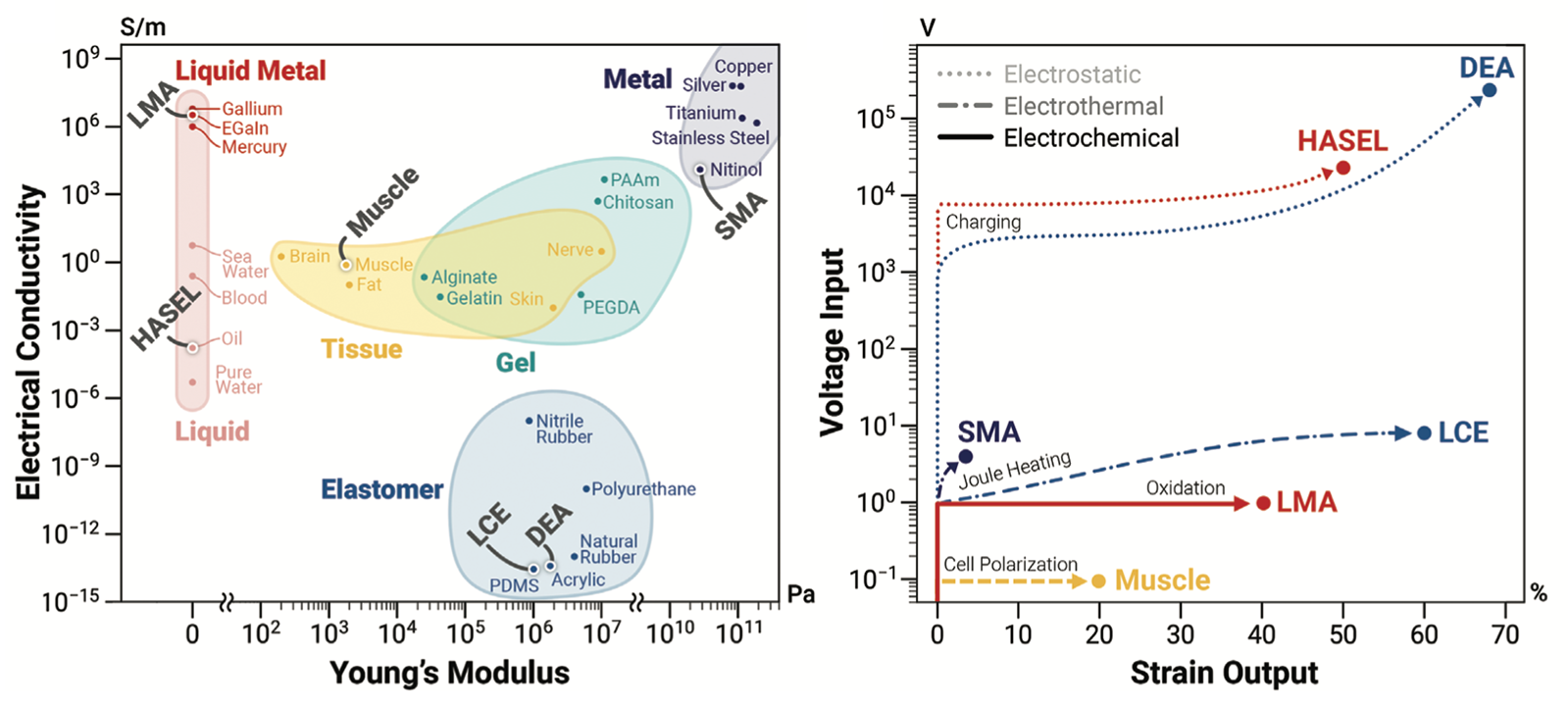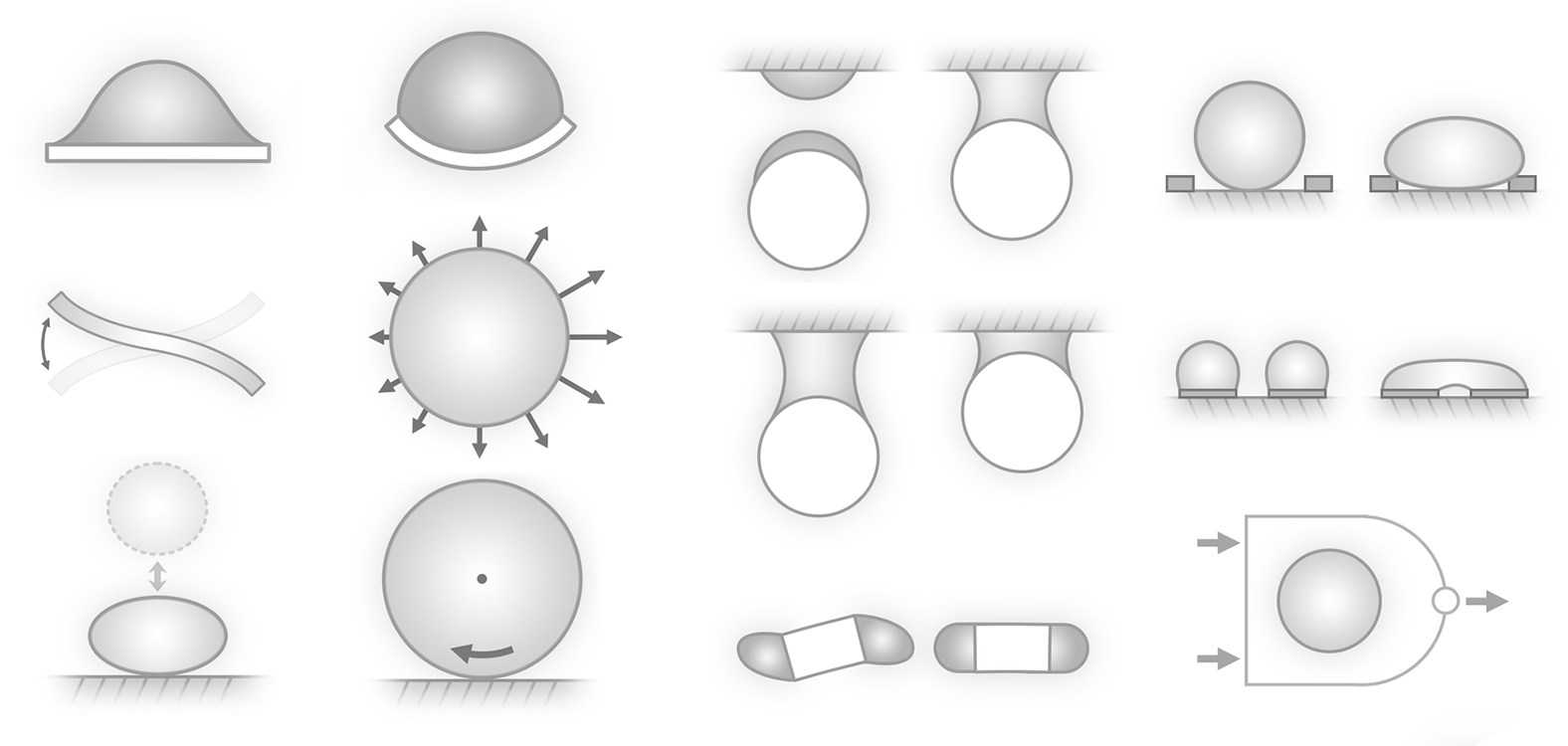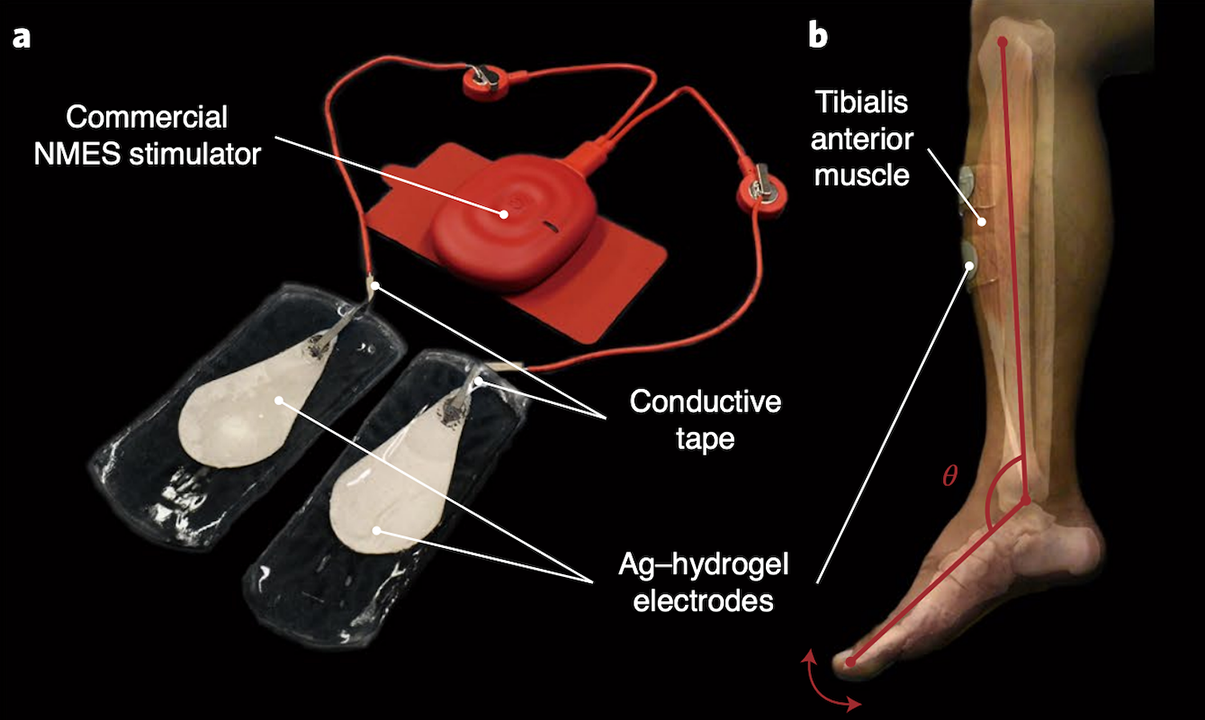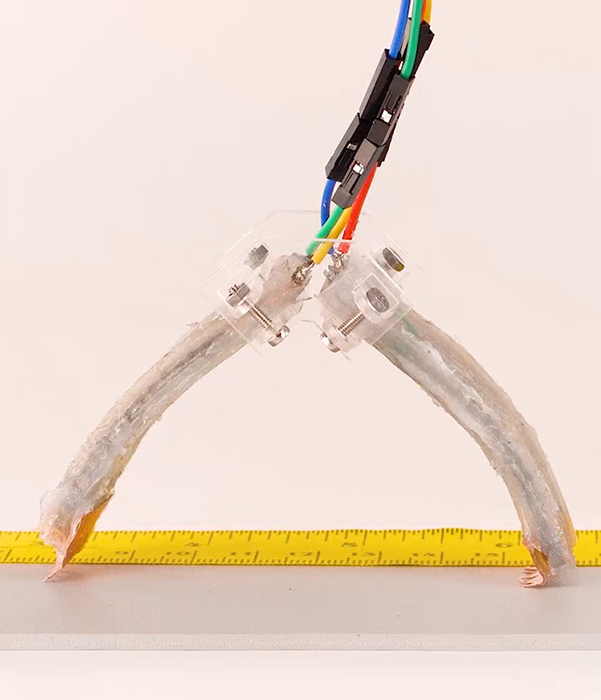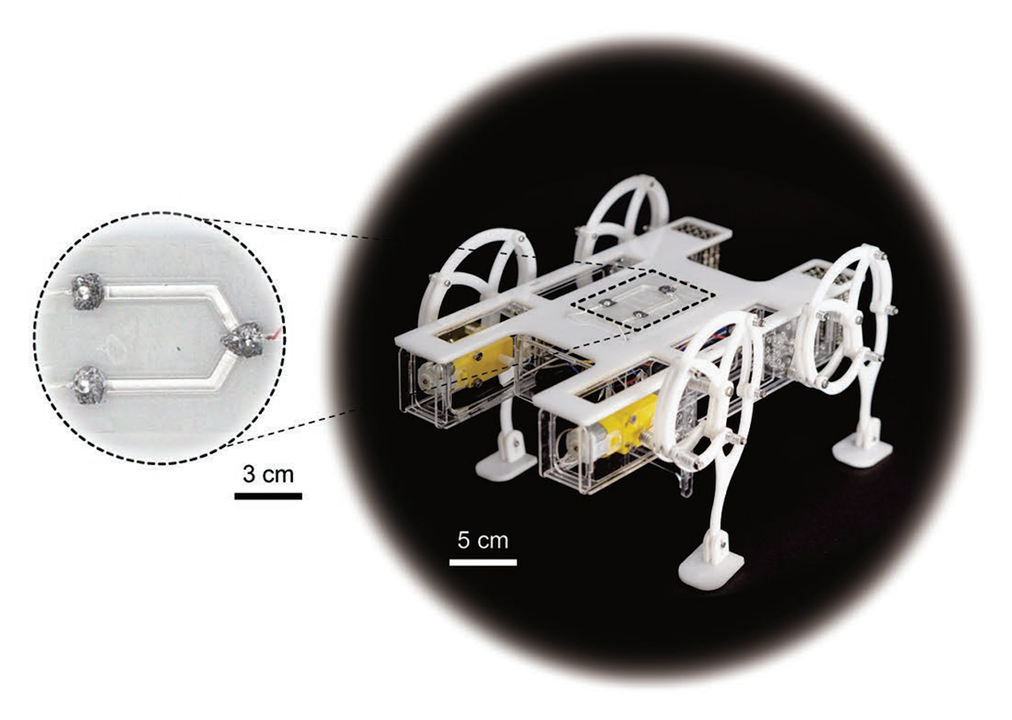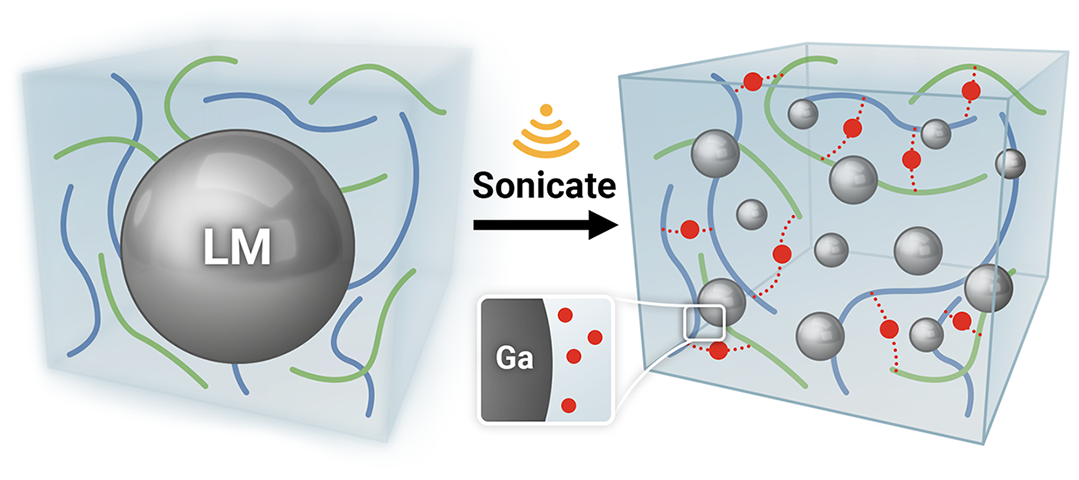
- I study active soft materials with a focus on liquid metals. My research seeks to exploit the mechanics of liquids to unlock advanced material structures and functionalities for a wide range of engineering potentials.
- I am a postdoctoral researcher at the Max Planck Institute for Intelligent Systems, Germany, where I work with Metin Sitti in the Physical Intelligence Department on a number of topics on liquid metals and their intelligent behaviors.
- I received my Ph.D. in Robotics from the Robotics Institute at Carnegie Mellon University under the guidance of Carmel Majidi in the Soft Machines Lab. My Ph.D thesis pioneers liquid metal actuators and contributes to the fundamental principles of a new class of soft actuators that are capable of muscle-like contraction, which opens the exciting opportunities in a new research paradigm where liquids play an active role in next-generation robotic and intelligent systems towards their theoretical limits.

Liao et al. In Preparation. /
Liao et al., Advanced Science (2022) /
Liao et al. Carnegie Mellon PhD Thesis (2022) /
Zhao et al., Nat. Electron. (2023) /
Zhang and Liao et al., Adv. Funct. Mater. (2023).
Liao et al. In Preparation. /
Liao et al., Advanced Science (2022)
Zadan et al., Adv Mater. (2021) /
Zhao et al., Nat. Electron. (2023) /
Ohm et al., Adv. Mater. (2023)
Liao et al. In Preparation.
p
Liao et al. In Preparation.
